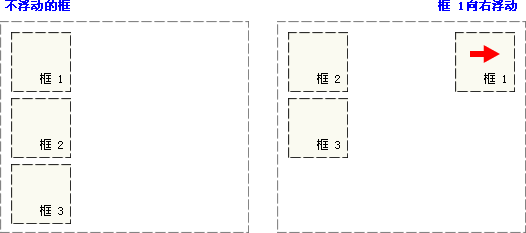CSS
1.什么是CSS
- 如何学习CSS
- CSS是什么
- CSS怎么用(快速入门)
- CSS选择器(重点+难点)
- 美化网页(文字、阴影、超链接、列表、渐变....)
- 盒子模型
- 浮动
- 定位
- 网页动画(特效效果)
1.1什么是CSS
Cascading Style Sheet层叠级联样式表
CSS:表现(美化网页)
字体、颜色、边距、高度、宽度、背景图片、网页定位、网页浮动...
1,2、发展史
CSS1.0
CSS2.0 DIV(块) + CSS, HTML与CSS结构分离的思想,网页变得简单,SEO
CSS2.1 浮动,定位
CSS3.0 圆角,阴影,动画....浏览器兼容性~
1.3、快速入门
-
在html文件中使用css可以使用
-
<!DOCTYPE html> <html lang="en"> <head> <meta charset="UTF-8"> <title>我的第一个css程序</title> <!--规范。<style> 可以编写css代码 语法: 选择器{ 声明1; 声明2; 声明3; 声明4; } --> <style> h1{ color: red; } </style> </head> <body> <h1>我的第一个css程序</h1> </body> </html>
-
-
css文件中
-
优先级
-
<!DOCTYPE html> <html lang="en"> <head> <meta charset="UTF-8"> <title>我的第一个css程序</title> <!--规范。<style> 可以编写css代码 语法: 选择器{ 声明1; 声明2; 声明3; 声明4; } --> <!--外部样式--> <style> h1{ color: red; } </style> <!--内部样式--> <link rel="stylesheet" href="./css/style.css"> <!--./css/style.css文件为单样式文件,通过链接获取,这里为绿色:green--> </head> <body> <!--标题的颜色样式,由就近原则决定,谁离结构标题结构近,就是什么颜色--> <!--这里因为就近原则,所以为绿色--> <h1>我的第一个css程序</h1> </body> </html>
-
-
外部样式的两种写法
-
链接式
-
<!--./css/style.css文件为单样式文件,通过链接获取--> <link rel="stylesheet" href="./css/style.css">
-
-
导入式
-
<style> @import url("./css/style.css"); </style>
-
-
2.选择器
作用:选择页面上的某一个或者某一类元素
2.1、基本选择器
-
标签选择器:选择一类标签
<!DOCTYPE html> <html lang="en"> <head> <meta charset="UTF-8"> <title>Title</title> <style> <!--基本选择器方式--> h1{ color: black; background-color: beige; border-radius: 24px; } h2{ color: blue; background-color: black; } </style> </head> <body> <h1>学css</h1> <h2>学css</h2> </body> </html> -
类选择器 class:选择所有class属性一致的标签,跨标签 .类名{}
<!DOCTYPE html> <html lang="en"> <head> <meta charset="UTF-8"> <title>Title</title> <style> /*类选择器的格式 .class的名称{} 好处,可以多个标签归类,是同一个class,可以复用 */ .ok{ color: #363dcc; } .just{ color: aqua; } </style> </head> <body> <h1 class="ok">标题一</h1> <h1 class="just">标题二</h1> <h1>标题三</h1> </body> </html> -
id选择器:全局唯一 #id{}
<!DOCTYPE html> <html lang="en"> <head> <meta charset="UTF-8"> <title>Title</title> <style> /*id选择器 : id必须保证全局唯一! #id名称{} 优先级: 不遵循就近原则,固定的 id选择器> class选择器> 标签选择器 */ #xiaoyuan{ color: black; } .xiaoyuan{ color: #d8b218; } h1{ color: #363dcc; } </style> </head> <body> <h1 id="xiaoyuan">标题1</h1> <h1 class="xiaoyuan">标题2</h1> <h1 id="xiaoming">标题3</h1> <h1>标题4</h1> <h1>标题5</h1> </body> </html>2.2层次选择器
-
后代选择器:在某个元素的后面
/*后代选择器*/ body p{ background-color: #00fff2; } -
子选择器
/*后代选择器*/ body>p{ background-color: #00fff2; } -
相邻兄弟选择器
/*相邻兄弟选择器, 只有一个,相邻(向下)*/ .active + p{ background: #a13d30; } -
通用选择器
.active~p{ background: #02ff00; }
-
2.3结构伪类选择器
2.4属性选择器(常用)
<!DOCTYPE html>
<html lang="en">
<head>
<meta charset="UTF-8">
<title>Title</title>
<style>
.demo a{
float: left;
display: block;
height: 50px;
width: 50px;
border-radius: 10px;
background-color: #00fff2;
text-align: center;
color: #221f1f;
text-decoration: none;
margin-right: 5px;
font: bold 20px/50px Arial;
}
/*属性名。 属性名= 属性值(正则)*/
/*存在id的属性 a[]{}*/
a[id]{
background-color: yellow;
}
a[id=first]{
background-color: gainsboro;
}
</style>
</head>
<body>
<p class="demo">
<a href="https://www.bilibili.com/" class="links item first" id="first">1</a>
<a href="" class="links item active" target="_blank" title="test">2</a>
<a href="iamges/123.html" class="links item">3</a>
<a href="iamges/123.png" class="links item">4</a>
<a href="iamges/123.jpg" class="links item">5</a>
<a href="abc" class="links item">6</a>
<a href="/a.pdf" class="links item">7</a>
<a href="/abc.pdf" class="links item">8</a>
<a href="abc.doc" class="links item">9</a>
<a href="abcd.doc" class="links item last">10</a>
</p>
</body>
</html>
3.美化网页元素
3.1为什们要美化网页
- 有效传递页面信息
- 美化网页,页面漂亮,才能吸引用户
- 凸显页面主题
- 提高用户属性
span标签:重点要突出的字,使用span套起来
<span>重点要突出的字<span>
3.2字体
3.3文本样式
- 颜色 color rgb rgba
- 文本对齐的方式 text-align = center
- 首行缩进 text-indent:2em
- 行高 line-height 单行文字上下居中
- 装饰 text-decoration
- 文本图片对齐: vertical-align:middle
3.4列表
/*ul li*/
/*
list-style:
none:去掉原点
circle:空心圆
decimal 数字
square 正方形
*/
3.5背景
背景颜色
背景图片
div{
background-image: url("images/tx.jpg")
/*默认式全部平铺repeat*/
}
.div1{
background-repeat: repeat-x;
}
.div2{
background-repeat: repeat-y;
}
.div3{
background-repeat: no-repeat;
}
3.6渐变
4.盒子模型和边框使用
4.1什么是盒子模型
margin:外边距
padding:内边距
border:边框
4.2边框
- 边框的粗细
- 边框的样式
- 边框的颜色
5.浮动
5.1标准文档流

块级元素:独占一行
h1-h6 p div 列表
行内元素:不独占一行
span a img strong...
5.2display
- 方向不可控制
5.3float
- 可以控制方向,浮动起来的话会脱离标准文档流,所以要解决父级边框塌陷的问题~
5.4父级边框塌陷问题
解决方案:
1.增加父级元素的高度~
#father{
border:1px #000 solid;
height: 800px;
}
2.增加一个空的div标签,清楚浮动
<div class="clear"><div>
.clear{
clear:both;
margin:0;
padding:0;
}
3.overflow
/*在父级元素中增加一个*/
overflow: hidden;
4.父类添加一个伪类
#father:after{
content: '';
display: block;
clear: both;
}
小结:
-
浮动元素后面添加空div
简单,代码中尽量避免空div
-
设置父类的高度
简单,元素假设有了固定的高度,就会被限制
- overflow
简单,下拉的一些场景避免使用
- 父类添加一个伪类: after(推荐)
- 写法稍微复杂一点,但是没有副作用,推荐使用!
6.定位
6.1相对定位
6.2绝对定位fixed和固定定位
6.3固定定位fixed
6.4 z-index
z-index图层:默认是0,最高无限~999
拓展
-
前端三语言
-
HTML:页面结构
-
CSS:页面表现
-
JavaScript:页面交互
-